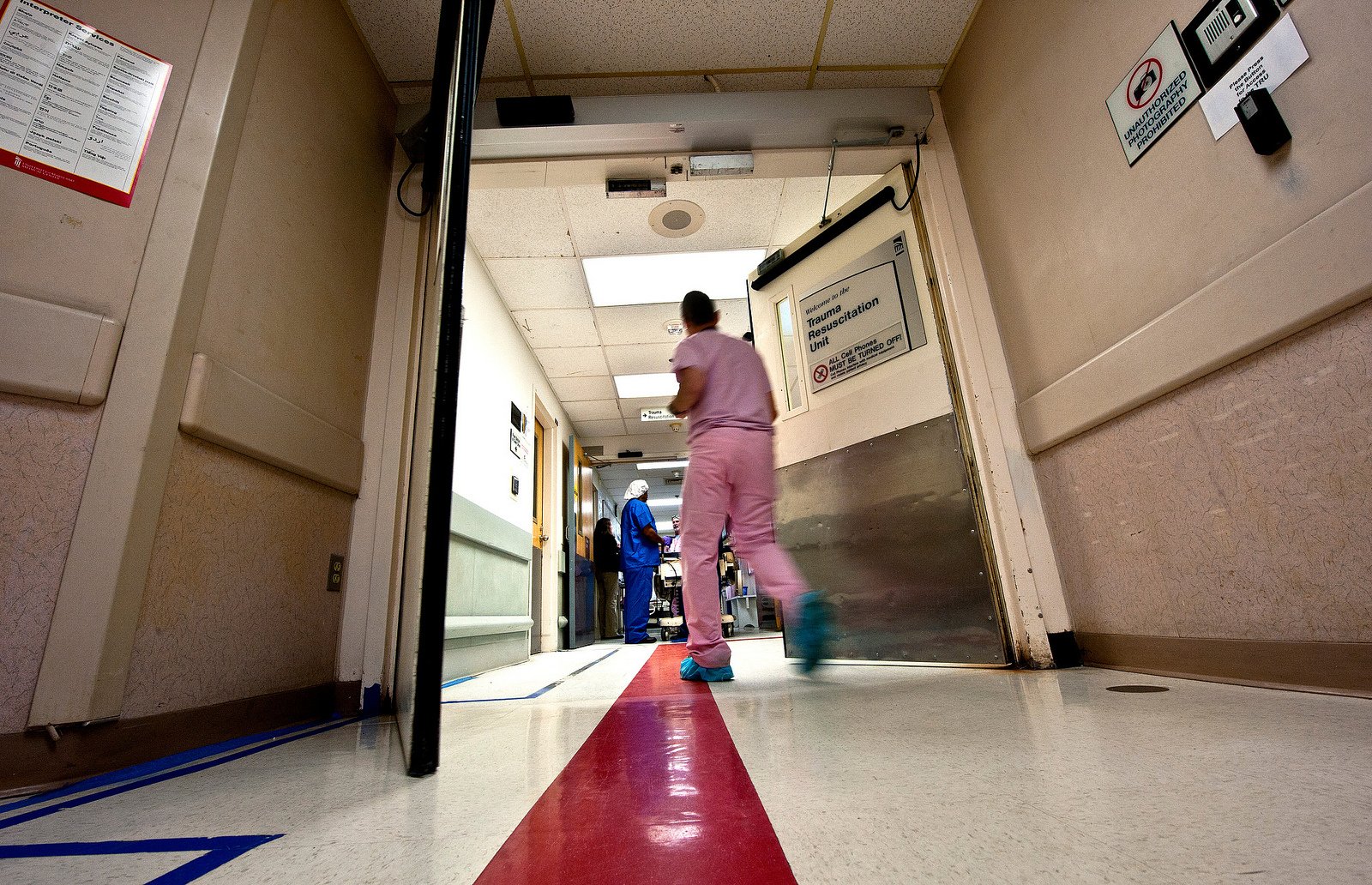The first episode of “Hopkins 24/7” opens with a young doctor in a white coat rushing down a fluorescent-lit hallway. A man has just been shot in the chest, abdomen, and leg. Still speed-walking, the doctor secures a purple surgeon’s cap on his head. At one point, he breaks into a run. Clad in green scrubs, he enters a trauma bay, turning briefly to say, “I got it.”
The doctor is Edward Cornwell, then the chief of trauma surgery at Johns Hopkins Hospital in Baltimore and one of the characters featured in the documentary series that aired in 2000. The six-part ABC News production, filmed over three months at Johns Hopkins, was described in one review as “a stunner about life, and death” and “the real-life ‘E.R.’” It documents medical crises unfolding in the emergency department and operating rooms of Maryland’s top trauma center, and captures doctors reflecting on their triumphs and missteps.
Seventeen years later, as some major cities continue to record increases in shootings, urban hospitals around the country triage gunshot victims every day. But that life-and-death work is a side of the gun violence epidemic that the public rarely sees. Because of patient privacy concerns, including a recent lawsuit over a medical reality series filmed in New York that triggered stricter rules under the federal Health Insurance Portability and Accountability Act, reporters are now rarely granted the kind of around-the-clock access that Hopkins provided.
Today, the series stands as a valuable, intimate portrait of fast-paced trauma care in cities that need too much of it. It makes for enlightening (and sobering) viewing for anyone concerned with the human costs that extend far beyond the raw crime statistics.
Last year, Baltimore recorded 318 homicides, most of which were shootings. In 1999, as the documentary was being filmed, the city saw 305.
In the first episode, we see Cornwell scrutinizing X-rays, calling for blood transfusions, and debriefing his fellow surgeons in tense closed-door meetings. One evening around midnight, an 18-year-old arrives in the operating room with a bullet wound in his back.
“Were you facing the bullet or did it get you from behind?” Cornwell asks.
The patient mumbles that he’d been hit while trying to run away. The teenager is turned on his side, revealing sheets soaked in blood. Cornwell addresses the patient by his name, Kenneth, as he and his team wheel him toward the operating room, where they will go on to save his life.
Other nights, Cornwell isn’t so successful. Just over halfway through the 45-minute episode, he gets called in on a “delta trauma,” the most serious kind of injury. The surgeon arrives in the trauma bay to find a young black man with a gunshot wound to the head. He finds no blood pressure and no pulse. It’s too late. A machine beeps.
“No one knows his name, who he is,” says Cornwell. “He’s Male Z. That’s what he is right now.” He hangs his head.
When not sprinting down corridors and pulling on gloves, Cornwell reflects on the limitations of surgical skill to staunch the number of victims who come through his emergency room.
“By the time they get to me, so many things have gone wrong for them to be in front of the barrel of a gun,” he says. “There’s no true prevention at this end. It’s too late. We gotta get out before, before they come to us.”
Cornwell makes his own attempt at prevention around the 15-minute mark, as he ushers a group of adolescent boys into a hospital room. A gunshot victim lies recovering in a bed. His torso bears a bright-pink scar, which Cornwell explains is the consequence of two bullets mangling “virtually every organ” inside his chest. The boys stand shocked. One turns to the wall, unable to look.
Research has since cast doubts on the effectiveness of such “scared-straight” tactics. But in 1999, Cornwell felt compelled to try to reach the city’s young people before they were carted in to him. He would continue to fight the cycle of violence in the years to come. After spending a decade at Johns Hopkins, he went on to become chief of surgery at Howard University Hospital in Washington, D.C., and be featured in a documentary about his life.
As a black doctor, Cornwell has always taken the task of treating young black victims of violence to heart. One evening, after being on call for 36 hours, he goes home to find his family has prepared a birthday celebration for him. He holds his young son close, looking worn as he tries to preserve the wall between his two worlds. The separation is vital to his sanity, but hard to maintain. His work at the hospital, Cornwell says, “brings home night after night, week after week, in a very real sense, the blessings that I’ve had….There but for the grace of God go I.”

